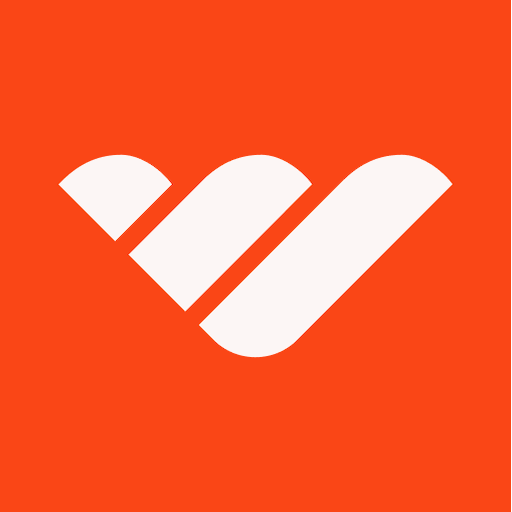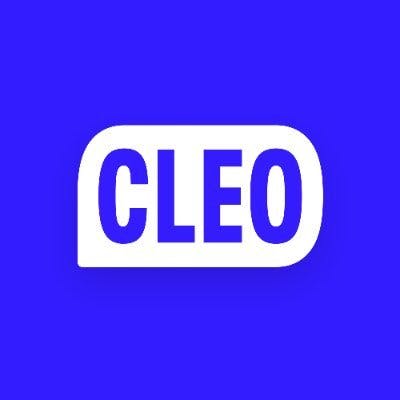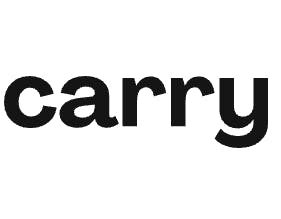Hussein Fazal, CEO of Super.com, on the paycheck-to-paycheck super app
 Jan-Erik Asplund
Jan-Erik Asplund

Background
Born as SnapTravel’s SMS hotel-deal bot, Super.com relaunched in 2022 as a personal finance and travel superapp for low-to-middle income consumers.
After raising $152M and pushing past $1B in annual travel GMV in 2024, Super.com's aim is to build the core membership-based product for financial wellness.
We spoke with co-founder & CEO Hussein Fazal to better understand Super.com's evolution and how the company is looking to win in with everyday Americans.
Key points from our conversation via Sacra AI:
- For paycheck-to-paycheck consumers, the limited personal finance toolkit comprises a patchwork of products—Bank of America debit for spend, Chime Credit Builder for score-repair, Rakuten ($15B revenue in 2024, up 10% YoY) for cash-back, and Prodege’s Swagbucks or Mistplay for micro-earnings from playing games or completing surveys. “This is a customer segment that has been ignored. . . Most of our customers can't get a traditional credit card. They end up just using their debit card - their Bank of America debit card or whatever it is - and they're not earning rewards or building their credit score. . . I don't know how much you know about the earnings space, but there's not a great consolidated way to earn money. There are a few companies that do it, but we don't think anyone's done a great job.”
- Seeking deeper engagement & share-of-wallet and higher LTV, low-to-mid-income fintech apps like Cash App (NYSE: XYZ), Rocket Money (NYSE: RKT) and Chime ($1.7B revenue in 2024, up 31% YoY) are bundling together coupons & discounts, cash advance, credit-builder card, budgeting, micro-earnings, and cash-back all into one app & wallet. “If you look at cash advance, credit building, secured cards, it's all for that low to mid-income consumer. . . They're all effectively trying to find different ways to solve their problem, which is: ‘I'm living paycheck to paycheck. I need to improve my financial wellness. What can I do?" Everyone takes these different approaches to try and do it.’”
- Bundlenomics have been brought premium subscriptions into conflict across a wide range of categories—spanning neobanks like Dave’s ($347M revenue in 2024, up 34% YoY) membership (fee-free advances and side-income tools), budgeting & bill-reduction SaaS like Rocket Money Premium (subscription cancellation), and discount platforms like Super+, (cash advances, exclusive travel deals, and 10% cashback)—to define, consolidate and win financial wellness for the 80%. “We are trying to build the world's most valuable membership program for the everyday American. I would love every American to have three memberships: Amazon Prime, Costco, and Super+. . . We used to say it's your membership for saving and earning. But we've added credit building, which is kind of saving, kind of earning. We've just added shipment protection. . . it's your membership to improve your financial wellness.”
For more, check out this other research from our platform:
- Chime (dataset)
- Klarna (dataset)
- Betterment (dataset)
- Wealthfront (dataset)
- Justin Intal, CEO of Forage, on helping online grocery platforms process EBT
- Why Mint.com failed
- Carl Ziadé, co-founder of Gaya on the auto financing and insurtech opportunity
- Wealthfront, Betterment, and the robo-advisor resurrection
- Ex-Chime employee on Chime's multi-product future
- Meg Nakamura, co-founder and CEO of Apto, on winning underserved markets with card issuing
- Cleo at $150M ARR
- The future of interchange
- Farooq Malik and Charles Naut, co-founders of Rain, on stablecoin-backed credit cards
- Bo Jiang, CEO of Lithic, on the power of the cards as a digital payment rail
- Chime at $1.5B/year
- Compound, Savvy, and the Mint for the 0.1%
- Klarna at $2.8B revenue
Questions
- Tell us about the original founding insight behind Super.com—what was the wedge, and what early product-market fit told you that there was something worth building?
- What happened to Hotel Tonight? It seemed like that model makes sense of offering up private inventory, underutilized supply. Can you say more about the relationship you have with hotels and why they want to offer discounted pricing to a company like Super.com?
- You've got a mix of savings tools, travel products, and now credit-building. How do you think about sequencing those features for a user? Is there a deliberate “on-ramp” strategy where one product is the hook and others deepen the relationship?
- You’ve described Super.com as a “savings super app.” Can you walk us through who your core customer is today—demographics, behaviors, financial situation—their finance stack, and what makes them turn to Super.com over other platforms?
- The last decade has brought us a variety of financial instruments/tools for low-to-middle income consumers: BNPL, cash advance, credit-building tools, and secured cards. Can you map out the key differences and how you see this landscape?
- We've covered Shein and Temu and other de minimis utilizing companies a few times. How do you see de minimis playing out against this tariff landscape? Do you see this driving higher demand from ecommerce shippers, whether big or small?
- How would you assess the relative value of points-based loyalty (Bonvoy, Genius) versus cash-based rewards or perks (Carrot Cash, Super+)? Are there specific areas or types of consumers where one or the other makes more sense?
- Do you see Cash App, Klarna, Rocket Money, and DoNotPay as converging toward the same endgame—an all-in-one consumer wallet—or do they represent fundamentally different species of fintech?
- We’ve seen travel brands partner with companies Amazon and banks like Capital One to offer customers of those ecosystems better deals. How do you think about Super.com’s positioning with respect to these kinds of cross-vertical bundling partnerships?
- You mentioned shipment protection - some of these things that are a little less "make money now, save money now," a little bit more of this downside protection. Do you see Super.com adding more stuff like that where it's maybe a low frequency use case, like DoNotPay or Truebill or something where it's doing more longer-running, lower-frequency services?
- If everything goes right for Super.com in the next five years, what does the world look like, and how has it changed?
Interview
Tell us about the original founding insight behind Super.com—what was the wedge, and what early product-market fit told you that there was something worth building?
When we started the company eight years ago, it was just about hotel deals over messaging. It was called SnapTravel. The way it would work is you would send a text message saying, "I want a hotel deal in New York." We would literally search all these systems and text you back with a great deal we found.
The first thing we learned very early on is that messaging wasn't necessarily a good interface because it's hard to browse, search, compare rates, see pictures, and do all these things. But it effectively made us like a travel agent. People know that if you physically walk into a travel agent, you can often get a better deal than you can find online because there's access to travel agent pricing.
What we learned is that price matters over everything else. When you're a consumer, if you can get the same hotel in the same room for a better price, that's what you're going to pick. That's just how consumers have been trained. They go to 10, 20, 30 different websites. They spend hours searching, searching, searching. And then they book wherever they find the best price. So that was the biggest learning - that price is the most important component of hotel booking.
A few years ago, we were thinking about growing the business. Most companies would say, "I'm going to go into flight or tourism activities or car rentals." We took a different approach and spent a lot of time talking to our customers. We talked to customers to a crazy degree, looked at the data, did surveys, did qualitative and quantitative research.
What we learned is that our customers were more the everyday American booking two-star, three-star hotels. There were obviously people looking for four and five-star hotels as well, but a large percentage of our customers were in that everyday American category.
We saw that a lot of them were paying with a debit card instead of a credit card because they couldn't get a credit card and had a poor credit score. As you keep chatting with them, you learn about the life they live. They're typically living paycheck to paycheck. They try to make ends meet. They want to build their credit score. They want to save not just on hotels, but on gas, insurance, and pharmaceuticals. They are looking for ways to earn more money. They're looking for cash advances. Basically, a bunch of ways to improve the financial wellness of this everyday American.
We did something really bold and decided to rebrand the company from SnapTravel to Super.com and start to add and layer on all of these services. About a year and a half to two years into it, we found that we needed a better way to tie in all these products together. We needed a better way to monetize all these products and build loyalty. That's when we launched the Super+ membership program.
If you talk to anyone at the company right now, they'll tell you that all I talk about all day every day is the membership program - growing it, adding new members, retaining our existing members. I'm starting to describe the company as building the world's most valuable membership program for the everyday American. That's sort of where we're at right now.
Let me show you what you get with the membership program. This should help with some clarity. We're trying to build the world's most valuable membership program for the everyday American. You can think of it like a Costco membership - you pay a monthly fee, and you get a bunch of stuff.
With your membership - you get access to the Super.com Mastercard.. You get 1% cash back on all your purchases. You get a bunch of credit building tools. You can take out cash advances between $20 and $250. You can earn money. You can save on gas, insurance, pharmaceuticals. And then, obviously, there are a lot of travel benefits, like cash back on hotels, member-only rates, 5% off flights, 15% off travel experiences like theme parks, 40% off movies and events, and a whole bunch of other stuff.
We're really trying to build the world's most valuable program for the everyday American, and we continue to add more value to that membership as the program evolves.
What happened to Hotel Tonight? It seemed like that model makes sense of offering up private inventory, underutilized supply. Can you say more about the relationship you have with hotels and why they want to offer discounted pricing to a company like Super.com?
If you understand how hotels work, ideally, a hotel would like to sell every single room at full price directly on their website. That's the ideal world. Nobody can deny that. But the reality is they can't sell every room at full price or directly on their website.
In order to fill their hotel rooms, they have a bunch of different ways they sell rooms. A typical hotel sells about 25% of their rooms direct, about 25% through OTAs like Expedia and Booking, about 25% through business travel, travel agents, conferences, and that type of stuff, and about 25% is wholesale discounted inventory. That's pretty consistent over many years across many hotels.
Now the question is: if I'm going to sell discounted hotel inventory, how am I going to do that without undercutting myself and still having people book direct? What these hotels do is they look for different "closed user groups" - ways in which they can sell discounted inventory.
Let me show you some obvious examples that are hidden in plain sight. If you go to Expedia.com directly, you will see certain prices, and then they will say "unlock instant savings with member prices." As soon as you've signed into Expedia, a hotel will say, "This is not general public anymore. This is now a smaller group of Expedia members, and maybe we can test out some discounted pricing with them."
As the group gets smaller and more exclusive, the more hotels are willing to give discounts. When you are a paying Costco member and you go to Costco Travel, you see discounted pricing. No one questions why that is available. It's just the way the hotel industry works.
When we started, we were accessing travel agent pricing, but now it's evolved so much into the membership program that most of our discounted rates are behind the membership program. You probably saw the stat that 62% of all our hotel bookings in the US are now coming from Super+ members.
For hotels, that's a good way they can fill up their rooms. Super+ members are loyal members who book more hotels and book more frequently. Hotels are like, "This is an attractive customer base that books frequently. I'm not undercutting my retail pricing because only paying Super+ members can see and access these rates." So it's a good way for them to fill up their hotel rooms with loyal members who they may not get otherwise.
You've got a mix of savings tools, travel products, and now credit-building. How do you think about sequencing those features for a user? Is there a deliberate “on-ramp” strategy where one product is the hook and others deepen the relationship?
The way we think about it is that if any product is going to have a significant impact and volume, it has to have its own user acquisition channel and its own standalone value.
People are looking for hotels, or a friend tells them, "I got a great hotel deal on Super.com." They come in, see a great hotel deal, and decide to become a member because you get access to even deeper discounts and 10% cash back. That's the reason they become a member. Now they may explore other products, but it's also quite possible that all they use Super.com for is booking hotels.
Take another scenario: you may have a customer scrolling on Instagram or TikTok who sees an ad for a cash advance. They want to take a cash advance, so they come in and have to become a member to access cash advances. They may think of Super.com only as "There's this great app that gives me a cash advance when I need it."
Someone may be on Credit Karma learning how to build their credit score, and they see that Super.com has this great credit building card and other ways to build credit. That's why they come in and become a member.
Each product has its own job to be done and high-intent user acquisition funnel. After they come in and become a member, then we think about how we can cross-sell that customer into other products. It depends on what they came in for and what they're looking for.
If someone comes in to book a hotel, we're not really going to get them to take a cash advance or to build a credit score - that's unlikely, maybe possible. If someone comes in for a cash advance, we're probably going to be able to cross-sell them into earning money. That's a common need. It's like, "I can get money, I can earn money. Both of those work for me."
So depending on what they initially come in for, you'll have a different propensity to cross-sell into other products. But across the board, the membership program does tie everything together. It ties in all the services we're offering, which is helpful for that demographic. You do end up with customers who do everything - taking cash advances, playing games, earning money, saving on gas, insurance, pharmaceuticals, hotels, using the card, building a credit score, earning cash back. That's obviously the ideal power member.
The other interesting thing about sequencing is that we can do certain things that only we can do and other companies can't because of the number of products we offer. We can encourage cross-selling.
For example, if you come in, become a member, and book a hotel, you get 10% cash back. We'll put that 10% cash back into your Super.com wallet, and then we'll give you instantly on your phone the Super.com Mastercard. Now you can literally just tap your phone and start paying for things. Every time you tap your phone, you're getting an extra 1% cash back, and you're starting to build your credit score.
Or if you're playing games and earning money, again, we put it straight into your wallet. It's attached to your Super.com Mastercard, and you can go start using that card. Because we have all these products, we can do some very interesting cross-selling by the way these products are integrated.
You’ve described Super.com as a “savings super app.” Can you walk us through who your core customer is today—demographics, behaviors, financial situation—their finance stack, and what makes them turn to Super.com over other platforms?
Your stack is very different than the stack that our customers use, of course. But generally, this is a customer segment that has been ignored.
Look at the card product we built. It's a very interesting product. Most of our customers can't get a traditional credit card because they don't have the credit score to do it. They end up just using their debit card - their Bank of America debit card or whatever it is - and they're not earning rewards or building their credit score.
Traditional secured charge cards usually require a big deposit upfront. So we built a different product. The product works like a hybrid debit-credit card. It uses the money you already have in your account and helps you build a credit score, but it runs on the credit rails and gives you cash back.
It's an innovative product that I haven't really seen out there. Maybe the closest comparison is the Chime Credit Builder credit building card, but ours is a little different in terms of the minimums you have to put in.
We just thought there wasn't a great product for that consumer who's living paycheck to paycheck but is still spending money without earning anything for it, not building their credit score, not earning credit. That's why we built that card.
The cash advance product and the earnings product are also pretty unique. I don't know how much you know about the earnings space, but there's not a great consolidated way to earn money. A few companies are out there - Rakuten does some cash back, Prodege with Swagbucks allows you to earn some money, there's a company called Misplay. There are a few companies that do it, but we don't think anyone's done a great job.
There's a lot of opportunity to earn money - filling in surveys, playing games, watching videos, and doing certain things. If we can consolidate all of that in one view, that's helpful.
As for all the products coming together, once you start experiencing it as a customer, you really see the value of having it all in one. We are now getting back to that world where people don't want so many apps on their phone. They don't want 10 different apps.
We see customers who say, "I love this app. It does everything for me. I can save on hotels. I can take a cash advance. I earn money. It goes straight into my wallet. I use my card. I build my credit score." It's starting to become that kind of hub for them to improve their financial wellness.
The last decade has brought us a variety of financial instruments/tools for low-to-middle income consumers: BNPL, cash advance, credit-building tools, and secured cards. Can you map out the key differences and how you see this landscape?
They're all slightly different use cases. Fundamentally, BNPL is a little bit different because it's more for a higher income customer, or at least mid to high income. But if you look at cash advance, credit building, secured cards, it's all for that low to mid-income consumer.
They're all effectively trying to find different ways to solve their problem, which is: "I'm living paycheck to paycheck. I need to improve my financial wellness. What can I do?" Everyone takes these different approaches to try and do it.
For us, being able to bring it all together is really helpful. If you want money or need money, you can come to Super.com and pick your approach. You can say, "I want to get money, I'm going to take a cash advance" or "I want to earn money, I'm going to play games and fill out surveys." If you want to build your credit score, you can use your card or use other credit building tools.
It's about trying to bring everything into one app and give customers these options under one roof. And it's all tied under one membership program.
You'll see a lot of these different apps now have membership programs, but you're paying multiple memberships. You may pay a membership for a cash advance product. You may pay an annual fee for a secured charge card. You may be paying a fee or membership to earn money. We've consolidated this all in one. It's almost like a "membership to rule them all" type of atmosphere.
I do believe that each one of these products has to stand on their own and offer real consumer value. But altogether, it creates even more value when it's all under one roof.
We've covered Shein and Temu and other de minimis utilizing companies a few times. How do you see de minimis playing out against this tariff landscape? Do you see this driving higher demand from ecommerce shippers, whether big or small?
In general, de minimis has ensured that companies like Shein and Temu can offer competitive prices because they're not paying import duty and tariffs like other importers do. If de minimis goes away, they will start paying tariffs and duties, and their prices will rise. Given the new announcements, the tariff would now effectively total 145% on goods, so prices would definitely increase at least that much.
If they're only doing domestic sales - importing and selling in the US - there's no way they can get that money back. But if there are returns, duty drawback has a provision for returns too. If they import items, never sell them, and then return them, those can also be eligible for duty drawback. So duty drawback could potentially play a role in saving some inventory costs for returned goods.
How would you assess the relative value of points-based loyalty (Bonvoy, Genius) versus cash-based rewards or perks (Carrot Cash, Super+)? Are there specific areas or types of consumers where one or the other makes more sense?
I think there's a market for both. Some people decide to go with points, some people decide to go with cash. Internally, we talk about that. Should we switch to points? Should we stay with cash?
What I can tell you is that with points, there's a lot more gamification and psychology and sometimes even obfuscation and manipulation. Whereas with cash, it's much easier for customers to understand. Customers love that they book a hotel and get 10% cash back. That is the cash dollar amount of what it's worth to them. They're playing a game and earning cash.
In some cases, that may not be as good for the company. But for the customer and having that clarity, it's much better. That's what we're optimizing for. We want to be straightforward. Every dollar and every penny matters to this demographic, so they can understand exactly the dollars and cents involved. We think that's a better customer experience.
Do you see Cash App, Klarna, Rocket Money, and DoNotPay as converging toward the same endgame—an all-in-one consumer wallet—or do they represent fundamentally different species of fintech?
There are a lot of similarities in terms of their demographic and they all want to be central to these consumers' financial lives but their core DNA and functions are different. Payments, lending, budgeting, automating savings are all different ways to try and get to the same result.
We’ve seen travel brands partner with companies Amazon and banks like Capital One to offer customers of those ecosystems better deals. How do you think about Super.com’s positioning with respect to these kinds of cross-vertical bundling partnerships?
Capital One started as a card program first and then layered on Travel. I think they have done a good job and customers value their travel portal. We took the opposite route and started with Travel and then layered on a card and other financial services. I think a key difference is that Capital One doesn’t use travel to bring customers into their ecosystem. We will bring people in for multiple reasons - for the travel deals, for the card, for the cash advance, and then introduce them to the Super+ membership and the rest of the ecosystem.
You mentioned shipment protection - some of these things that are a little less "make money now, save money now," a little bit more of this downside protection. Do you see Super.com adding more stuff like that where it's maybe a low frequency use case, like DoNotPay or Truebill or something where it's doing more longer-running, lower-frequency services?
I would say that's not a priority. The priority is probably on the higher frequency stuff that people need all the time to address very real and immediate pain points. So we do lean more in on that than anything else.
Here are some customer quotes: "Every experience with this app has been great. Will return for more savings." So some people just think of it as that. "Easy to use, all kinds of ways to save and earn. Multiple ways of earning money. They also get credit monitoring." You can see people latch onto different pieces of it.
"I get a cash advance when I need it. I can play games and do surveys and make more money." And then, "Six months staying in hotels regularly, can't beat the rate, they get 10% cash back. I use the Super.com card. I get to earn rewards, play games."
You'll see that people latch onto different pieces of it, but ultimately, we want to make the world's most valuable membership program to help people save, earn, build credit, and improve their financial wellness.
We want it to be the membership program that everyone has: Amazon Prime, Costco, and Super+. We'd be really happy, and I think our customers will be really happy because it's really helping them improve their lives.
If everything goes right for Super.com in the next five years, what does the world look like, and how has it changed?
We are trying to build the world's most valuable membership program for the everyday American. I would love every American to have three memberships: Amazon Prime, Costco, and Super+. If things go well in five years, that's what we expect.
How is the world different as a result? We see the income inequality gap growing more and more. But the world's in a better place if we can get millions of everyday Americans using Super.com and on the Super+ membership because it's going to improve their financial wellness.
We expect our members are going to be earning more money, saving more money, building their credit score, and really experiencing more of what life has to offer.
The way we talk about Super.com is it's the membership for improving your financial wellness. We used to say it's your membership for saving and earning. But we've added credit building, which is kind of saving, kind of earning, maybe not. We've just added shipment protection, so if you order something online, we'll insure you. There are things we're starting to add that don't neatly fit into saving and earning.
So I would say it's your membership to improve your financial wellness. And it's targeted to that everyday American. You and I may not need that, but there are about 200 million Americans who are on that sort of under $100K income line. For them, having the Super+ membership makes a lot of sense, and it should improve their financial wellness.
Disclaimers
This transcript is for information purposes only and does not constitute advice of any type or trade recommendation and should not form the basis of any investment decision. Sacra accepts no liability for the transcript or for any errors, omissions or inaccuracies in respect of it. The views of the experts expressed in the transcript are those of the experts and they are not endorsed by, nor do they represent the opinion of Sacra. Sacra reserves all copyright, intellectual property rights in the transcript. Any modification, copying, displaying, distributing, transmitting, publishing, licensing, creating derivative works from, or selling any transcript is strictly prohibited.







